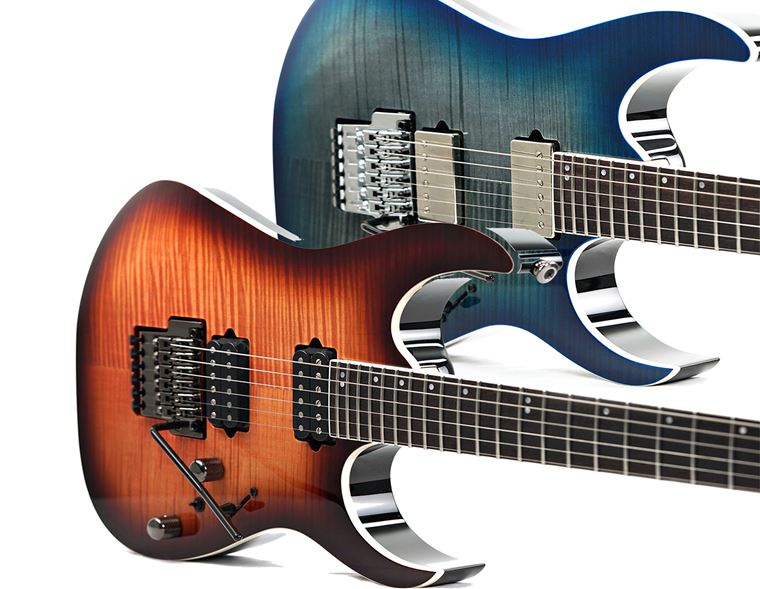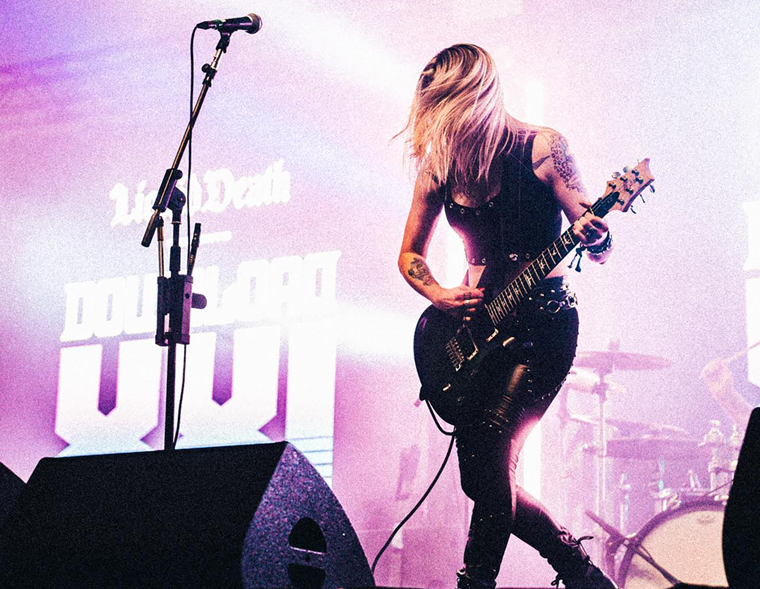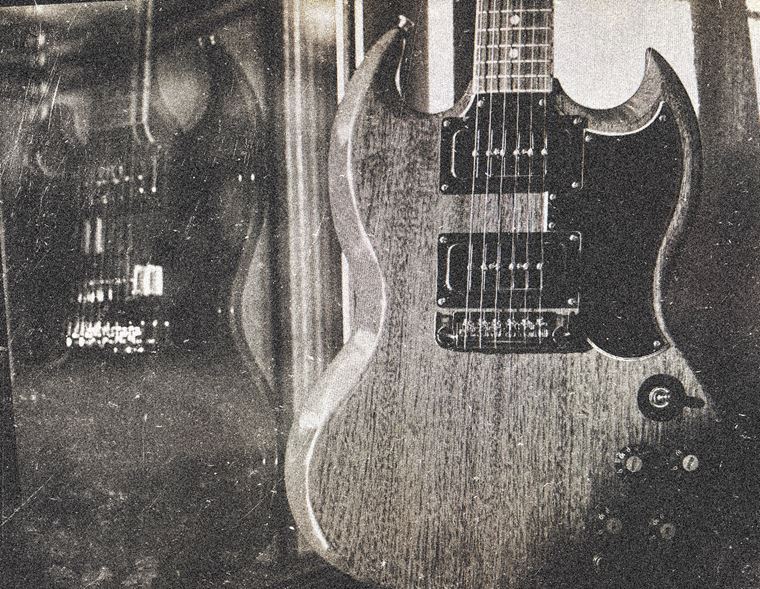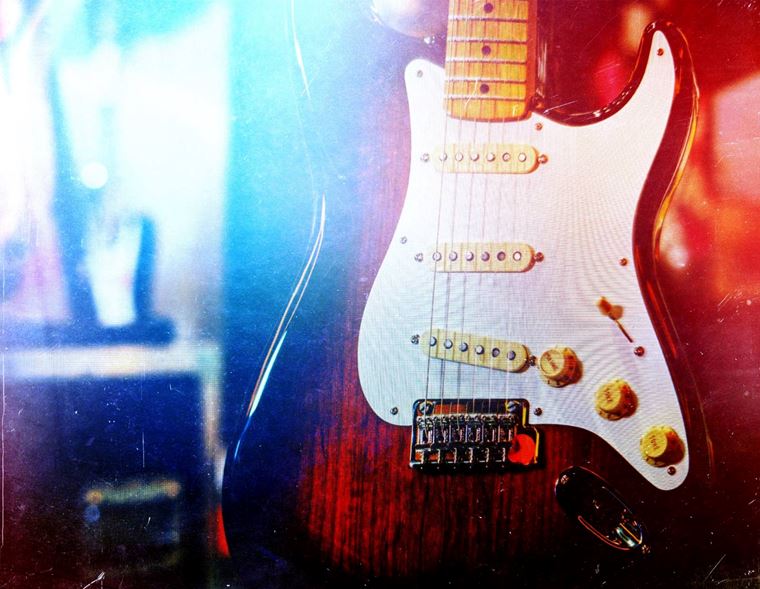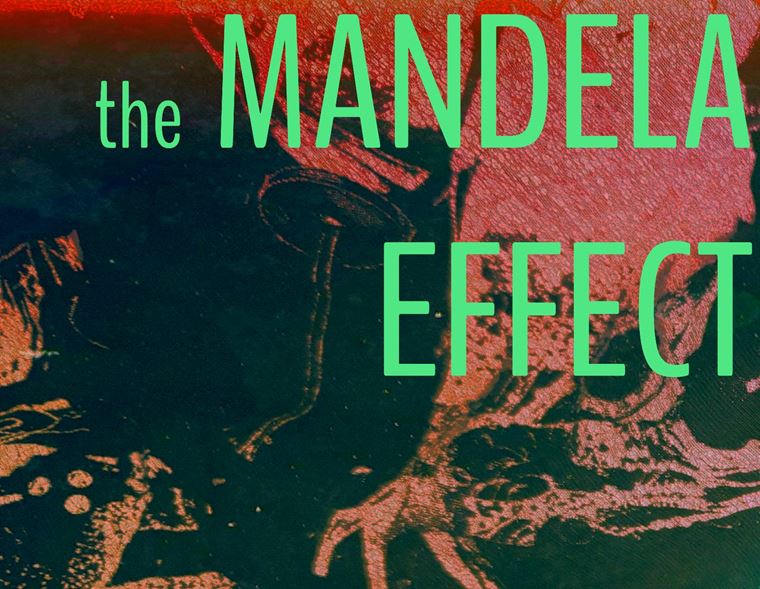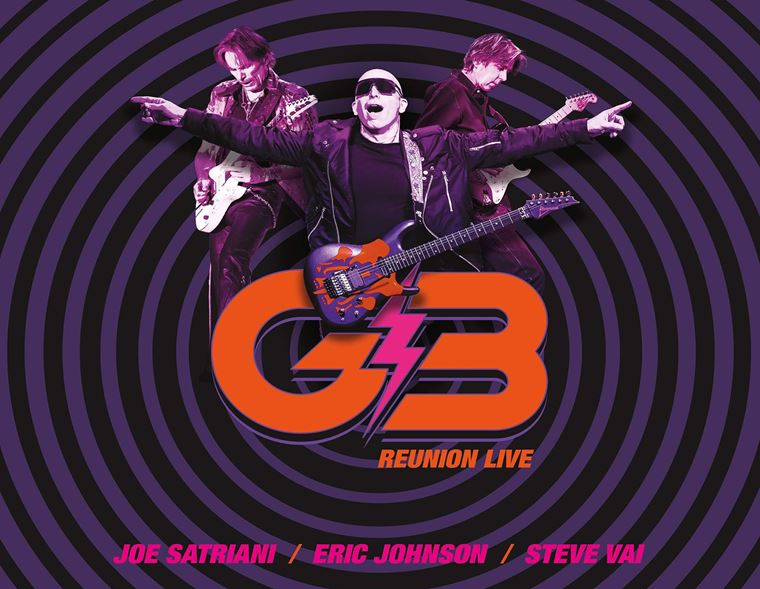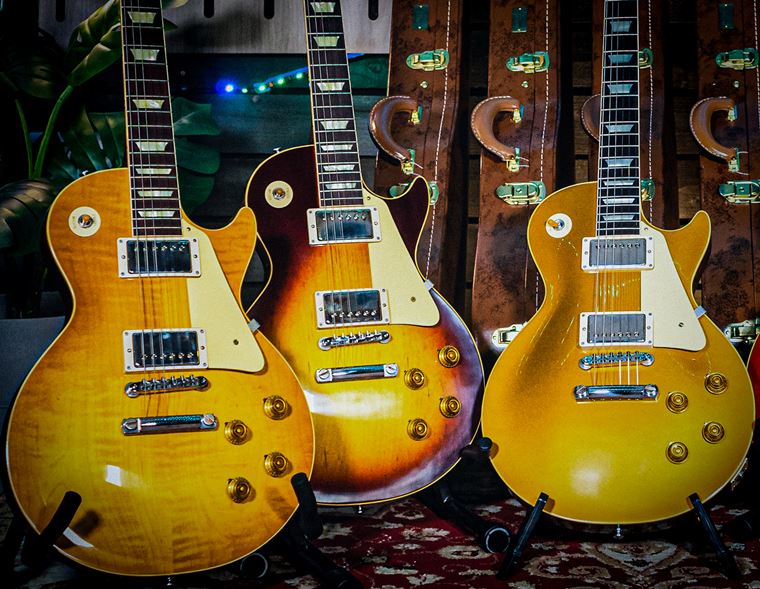Bass Legends: The 10 Best Bass Guitarists of All Time
Published on 28 August 2019
It’s time to acknowledge and celebrate the outright geniuses of bass guitar: those players who just flat-out OWN the instrument. Great playing, inventive writing, excellent sound, amazing performances and inspirational talent: those are the things we are looking for on our quest for Bass Legends!
We’ve done our usual and whittled down the absurdly lengthy longlist to a rarefied podium of only ten players. There will, as always, be limited shout-outs to honourable mentions, otherwise known as people who are almost as incredible as the ten we've picked for the top slots!
Without further preamble, and in no particular order, here is our compiled list of Bass Legends!
10. John Entwistle
John Entwistle’s playing combined technique, invention and taste, not to mention a host of great bass tones! The late, great Who bassist was adventurous with his sounds, not to mention bold. On classic tunes like My Generation, he took solo duties away from guitarist Pete Townshend, bringing attitude and invention to their music.
Entwistle was predominantly a plectrum player and was famous for his extreme Marshall-stack on stage volume. On live recordings, it’s often easier to hear his contributions to the Who’s sound: as ‘lead bass’ player, he often played melodic motifs whilst Townshend kept the rhythm going on his guitar.
In terms of instruments, Entwistle had lots, as you could imagine, but he favoured Warwick and Alembic basses. If you are going for that great ‘My Generation’ sound, you’ll want flatwound strings on your Fender Jazz Bass!
9. Larry Graham
Larry Graham invented slap bass. That’s enough to elevate his to bass greatness but the Sly and The Family Stone bassist has brought us several lifetimes’ worth of outstanding funk and soul basslines.
As a member of the Family Stone, his music transcended race and gender politics during the late 60s, focusing on bringing music that was optimistic and Utopian. As founding member of Graham Central Station, he has brought his infectious grooves to audiences since the 70s.
Graham is known to play through Acoustic 360 bass amps and uses both Moon and Warwick basses, including of course his own signature model. Everything else is in those fingers!
8. Jaco Pastorius
Though not a household name to casual music fans, Pastorius is held within bass circles in the highest possible esteem. An unadulterated virtuoso, Pastorius was singular in advancing the lyrical, tuneful melodicism of the bass guitar.
A fan of the upright bass, Jaco famously ripped the frets out of his ’62 Fender Jazz bass, opening the sound up to even more expressive manipulation. Jaco made frequent use of harmonics in his playing, both natural and artificial. He whirled like a dervish onstage, dancing and flipping whilst playing basslines influenced by African and South American styles. In his short lifetime, he did more to influence other bassists than maybe any other musician.
7. Tony Levin
Currently on bass duties with King Crimson, innovative bassist Tony Levin has had quite a career! As well as over three decades with Crimson, Tony had held down long-term bass duties with Peter Gabriel, and has performed on sessions with artists like David Bowie, Lou Reed, Warren Zevon, Peter Frampton, Pink Floyd, Stevie Nicks and a very long list of others!
Levin is famous not only for being a world-class bassist (and all-round top guy), but also for being perhaps the most visible user of the Chapman stick, a hybrid guitar/bass fretted instrument which is played with both hands on the neck. Such is Levin’s musicality, he blends tremendous technique and groove into music that is disarmingly accessible.
A great example of Tony’s out of the box bass playing can be found on Peter Gabriel’s megahit ‘Big Time’, where drumsticks instead of fingers were used to perform the part! It’s an unusual concept but it sounds great.
6. Bootsy Collins
Bootsy Collins, known to no one as plain old William (his mum named him Bootsy because he ‘looked like a Bootsy’), is a larger than life character who, to many, is funk personified. His outlandish dress sense and star-shaped basses make him an iconic character. His deeply effective groove basslines put him on the map as one of the greatest bassists ever.
Cutting his teeth in no less than James Brown’s band, Bootsy went on to make a name for himself with George Clinton, playing in both Parliament and Funkadelic. Always a fan of comedy pseudonyms, Bootsy took up the mantles ‘Casper the Funky Ghost’ and ‘Bootzilla’ as he developed a Clinton-approved persona as a kind of space alien bass player.
Bootsy’s deliriously ridiculous Star basses were originally custom-made one-offs, though Warwick have since stepped in with a signature model.
Bootsy remains one of the most innovative and influential bass guitarists in history.
5. Carol Kaye
Is Carol Kaye the most underrated bassist ever? What do you mean you haven’t heard of her? We guarantee that you’ve most definitely heard her work.
Starting off her session career as an acoustic rhythm player, she contributed to songs like La Bamba and You’ve Lost that Lovin’ Feeling before filling in on bass to help out a producer during a session. It turned out to be a fortuitous move, since she found that she loved the function and simplicity of the instrument.
After this moment, there was no stopping her! Kaye has played on over TEN THOUSAND sessions! These weren’t local randoms, either. We are talking about her playing on the Beach Boys’ Pet Sounds, Glen Campbell’s Wichita Lineman, Nancy Sinatra’s These Boots are Made for Walkin’ and endless hots by artists like Simon & Garfunkel, Stevie Wonder, The Supremes and Frank Sinatra. She found time to play a little 12 string guitar for Cher and Frank Zappa amidst all this!
Super-composer Quincey Jones rated her as one of his favourite session players; he had this to say about her skills: “Fender bass player Carol Kaye... could do anything and leave men in the dust.” Kaye also showed up on Hollywood soundtracks like Bullitt, Mission: Impossible, Shaft and countless more.
So you definitely have heard Carol Kaye’s playing.
Carol’s main bass was a Fender Precision with flatwound strings and a high action. She nearly always used a plectrum and her secret for great tone was to stick a piece of felt in the bridge behind the strings to kill of unwanted sympathetic tones.
Carol’s a genuine legend who was there at the beginning and is still playing today!
4. Jack Bruce
Alongside drummer Ginger Baker and guitarist Eric Clapton (who he?), Scottish bassist Jack Bruce made history and changed the world with supergroup Cream. It takes a musician confident in his abilities (to say the least) to share a stage with such virtuosic talent. Jack was such a man! His bass and vocals defined Cream as much as the input from the other two, making them one of the most influential ‘British Invasion bands of the late 60s.
Bruce’s jazz background and education as a cellist certainly informed his unique style. His style involved using catchy, memorable riffs (Sunshine of Your Love, anybody?) and had fantastic improvisational skills to boot.
Like Entwistle, Jack Bruce was a fan of volume. Tales abound of each Cream member (including Baker) reaching across mid-gig to monkey around with each other’s amp controls, no doubt fostering the famous animosity that finally spelled the end for the band.
Bruce favoured Gibson bass guitars, in particular the EB-3, but also often played a Warwick fretless bass guitar.
3. Flea
Flea is arguably the most well-known modern bassist in popular music. Outside of the music itself, his persona & performance style have made him familiar to millions.
Michael Balzary (‘Mikey B the Flea’, as his high school handle went) may be the epitome of the crazy Californian musician but he is actually Australian! Flea moved to the US when he was 4, and hooked up with future Chili Pepper Anthony Kiedis at high school in Los Angeles.
Flea’s playing is pretty special: he manages to walk that very thin line of both supporting the song fully and also writing attention-grabbing pieces of music. His technical ability is very obvious and yet not domineering. He manages to simultaneously stand out and blend in, in a way that most other ‘showy’ bassists never do. It’s some trick!
Over a 30+ years career, Flea has brought a sun-drenched Californian slap and swagger to mainstream audiences, combining Funk chops with Punk energy. Earlier material from Freakey Styley bristled with vibe, whilst latter period basslines from songs like Scar Tissue brought some reflection and melancholy to the table.
A fan of many types of bass, Flea tends to choose either custom Modulus graphite models, a ’62 Shell Pink Jazz Bass (given to him by a fan and made into a signature model) or his newest Fender Flea Bass II.
2. Victor Wooten
Victor Wooten, the absurdly talented bassist for Béla Fleck and the Flecktones, has won Bass Player magazine’s Bass Player of the Year no less than three times! Wooten has played bass since the age of two, which seems preposterous, and was jamming with family members by the tender age of 6. Not one to waste time, is our Vic!
An adventurous player, Wooten has Kahler tremolo system installed in some of his basses for real time whammy effects.
Wooten also plays bass with Nitro, has released over ten solo albums and has appeared on recordings with everyone from Greg Howe to bass supergroup SMV with Marcus Miller and Stanley Clarke.
1. JJ Burnel
If attitude was a currency, this guy would be richer than Richard Branson. Jean-Jacques Burnel of the Stranglers is a martial arts pro who has the growliest bass tone in history, not to mention the most obnoxious riffs.
The Stranglers were always much more than just another angry English punk band. Their songs had a musicality, mystery and depth that defied the genre. It could be said that they were never really punks at all, though they certainly copped the attitude.
Burnel’s basslines on songs like Nice and Sleazy, Peaches and No More Heroes gave the songs not only their propulsion but also their identity and personality. His classic, grinding sound was achieved with a Fender P-Bass, a Hiwatt valve head and a Marshall 4x12 cabinet with torn speaker cones. JJ tends to favour a plectrum style over fingerstyle. Simply add volume, adopt a sneering pose and get stuck in!
Honourable Mentions and Final Thoughts
All of these incredible musicians have made impiortant contributions to music. They have mastered their craft, shared their gifts and brought us joy.
There will always be too many great bassists to fit into a samll blog like this, and so we would like to include the following honourable mentions:
- James Jamerson: original Funk Brother who definitely deserves to be on the list... our apologies
- Cliff Burton, Metallica's original Bass-behemoth
- Geddy Lee, the multitasking master of Prog
- Peter Hook, the iconic, melodic 'lead' bassist of Joy Division and New Order
- Paul McCartney, for influencing every musician of the last half century
- John-Paul Jones, the inventive and multi-skilled foil to Jimmy Page in Led Zepellin
There will be more, but for now, this list stands as our opinion on who has made the biggest waves with their music, or influenced other to do so.


